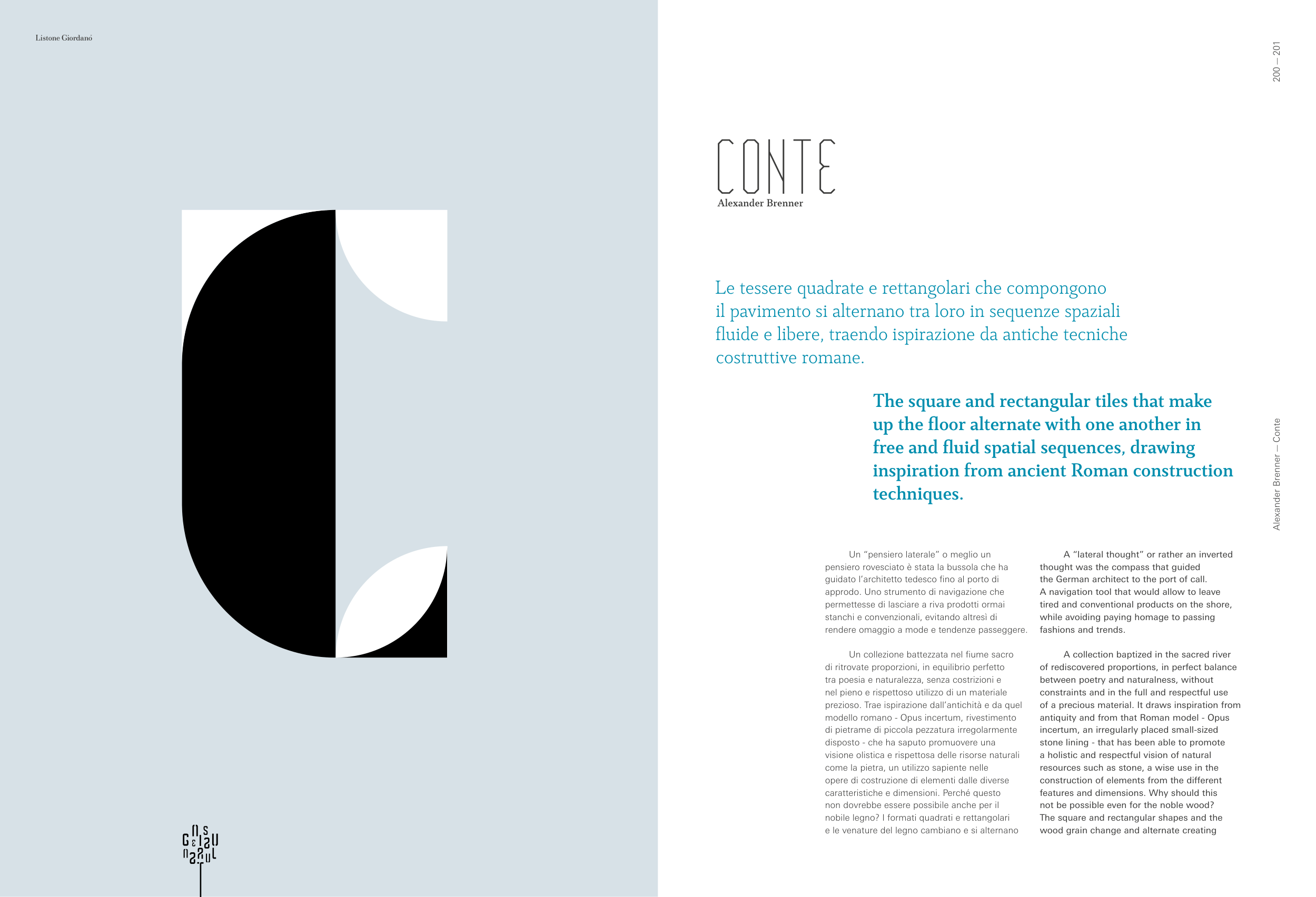Un “pensiero laterale” o meglio un
pensiero rovesciato è stata la bussola che ha
guidato l’architetto tedesco fino al porto di
approdo. Uno strumento di navigazione che
permettesse di lasciare a riva prodotti ormai
stanchi e convenzionali, evitando altresì di
rendere omaggio a mode e tendenze passeggere.
Un collezione battezzata nel fiume sacro
di ritrovate proporzioni, in equilibrio perfetto
tra poesia e naturalezza, senza costrizioni e
nel pieno e rispettoso utilizzo di un materiale
prezioso. Trae ispirazione dall’antichità e da quel
modello romano - Opus incertum, rivestimento
di pietrame di piccola pezzatura irregolarmente
disposto - che ha saputo promuovere una
visione olistica e rispettosa delle risorse naturali
come la pietra, un utilizzo sapiente nelle
opere di costruzione di elementi dalle diverse
caratteristiche e dimensioni. Perché questo
non dovrebbe essere possibile anche per il
nobile legno? I formati quadrati e rettangolari
e le venature del legno cambiano e si alternano
A “lateral thought” or rather an inverted
thought was the compass that guided
the German architect to the port of call.
A navigation tool that would allow to leave
tired and conventional products on the shore,
while avoiding paying homage to passing
fashions and trends.
A collection baptized in the sacred river
of rediscovered proportions, in perfect balance
between poetry and naturalness, without
constraints and in the full and respectful use
of a precious material. It draws inspiration from
antiquity and from that Roman model - Opus
incertum, an irregularly placed small-sized
stone lining - that has been able to promote
a holistic and respectful vision of natural
resources such as stone, a wise use in the
construction of elements from the different
features and dimensions. Why should this
not be possible even for the noble wood?
The square and rectangular shapes and the
wood grain change and alternate creating
The square and rectangular tiles that make
up the floor alternate with one another in
free and fluid spatial sequences, drawing
inspiration from ancient Roman construction
techniques.
Le tessere quadrate e rettangolari che compongono
il pavimento si alternano tra loro in sequenze spaziali
fluide e libere, traendo ispirazione da antiche tecniche
costruttive romane.
CONTE
Alexander Brenner
200 — 201
Alexander Brenner — Conte


